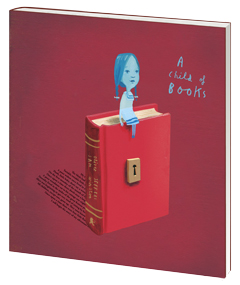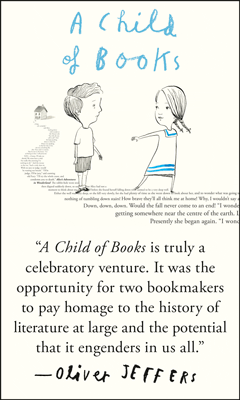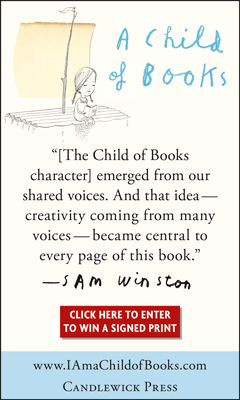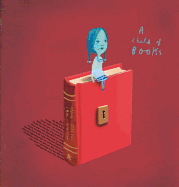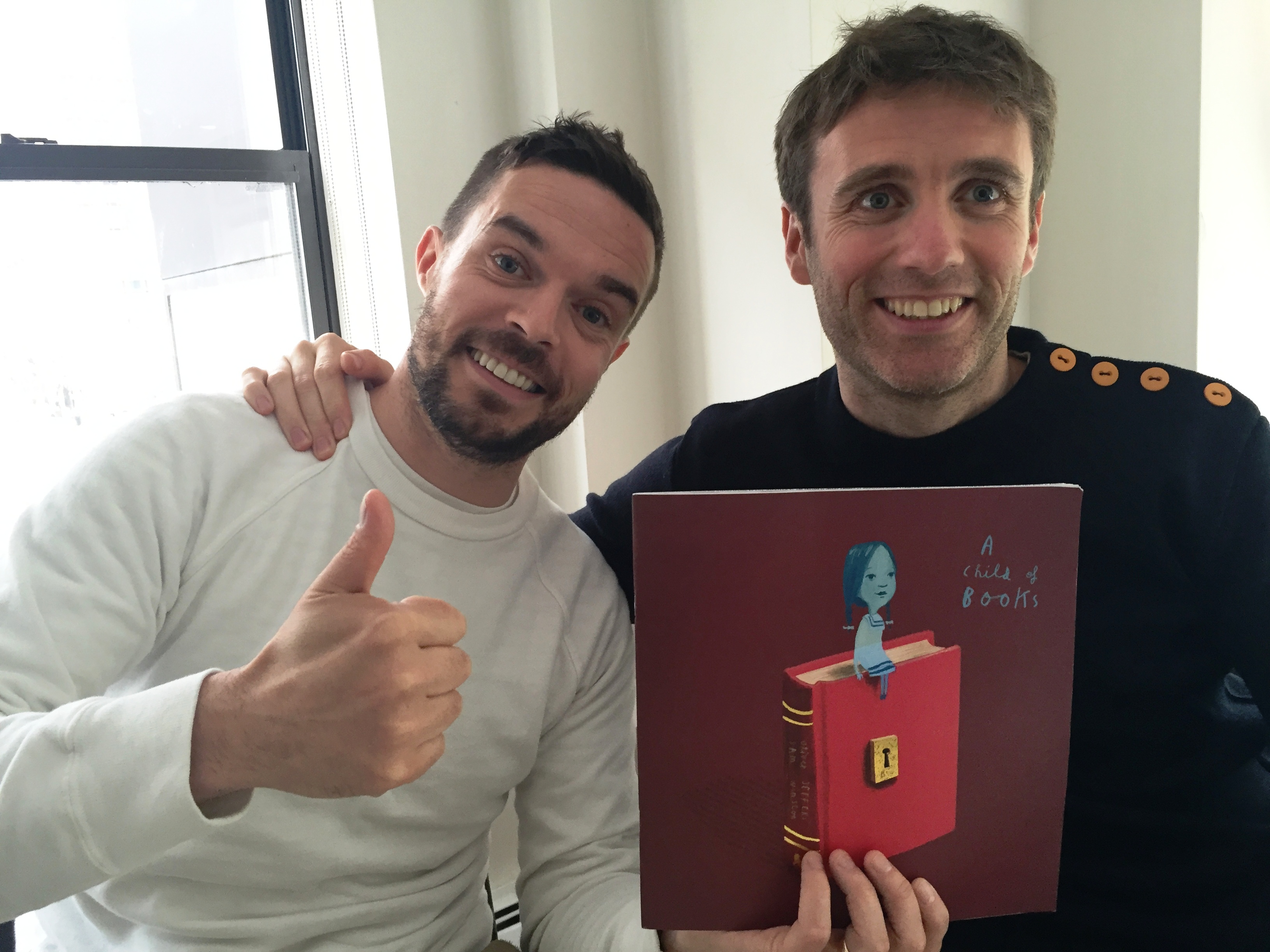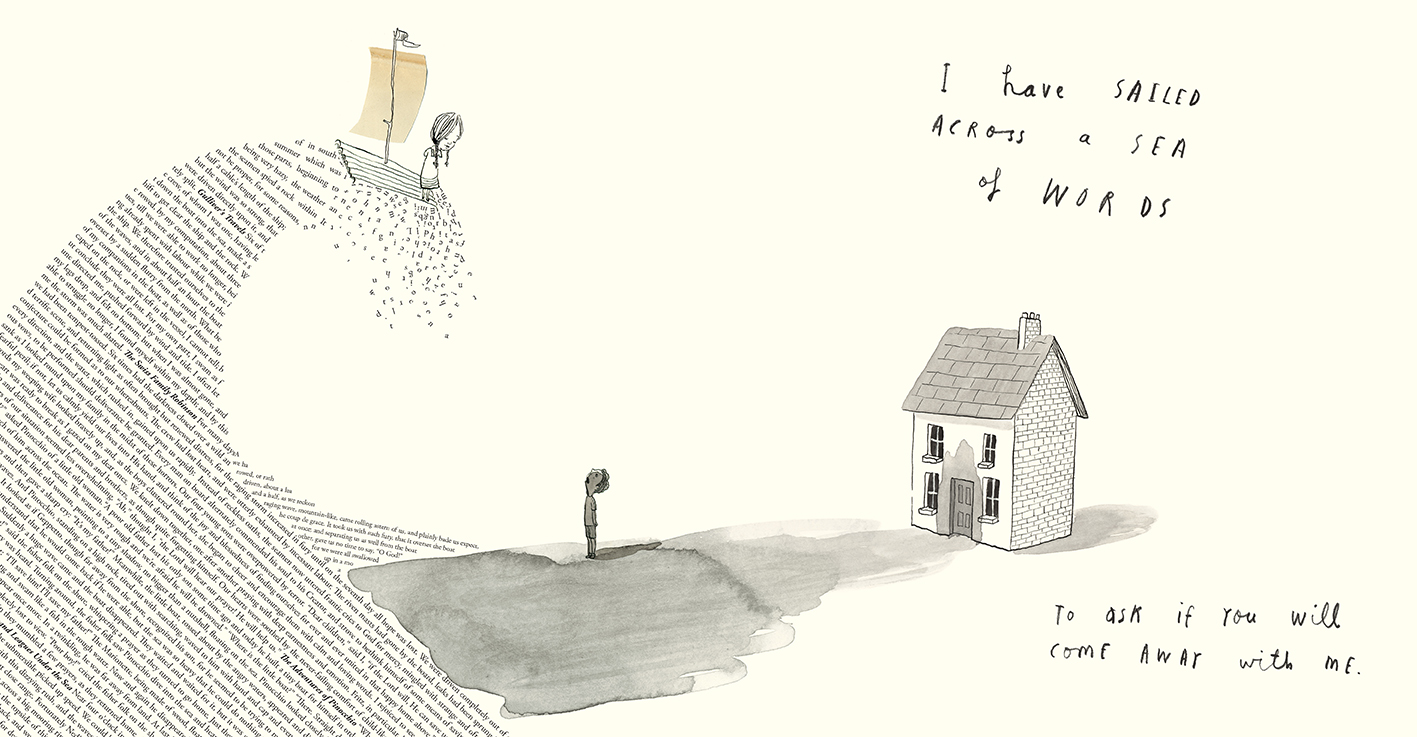A Child of Books
by Oliver Jeffers, Sam Winston
A little girl, "a child of books," takes a boy by the hand and introduces him to the world of stories.
Ireland-raised, Brooklyn-dwelling Oliver Jeffers and Londoner Sam Winston believe in the power of stories. They believe in storytelling so wholeheartedly that they spent nearly six years collaborating as dueling author-illustrators on A Child of Books, hoping to both reflect and honor the idea that books are the key to countless adventures and flights of fancy.
Jeffers, the creator of Once Upon an Alphabet and illustrator of Drew Daywalt's The Day the Crayons Quit, was introduced to Winston, an artist with a passion for typographic artwork and limited-edition art books, and they decided to work together. The two storytelling artists crafted a visual narrative--a picture book--that celebrates both imagination and books in general, but especially classic children's literature, and even more particularly, British and American children's literature as old as the likes of Jonathan Swift's Gulliver's Travels, J.M. Barrie's Peter Pan and Mary Shelley's Frankenstein. As Jeffers says, "Our work is shaped by, and built on, the books that we were exposed to as children. We wanted to pay homage to those stories that impacted and influenced us."
To begin at the beginning, a girl with braids in a sailor-collared dress sits on the edge of her Huckleberry Finn-style raft, legs dangling in the water, reading. The girl and raft are charmingly drawn, in simple lines, and the only color on this spread is the raft's sail, which looks like a photograph of a parchment-yellow page. "I am a child of books," says the text, in mostly cursive, hand-drawn letters. "I come from the world of stories." In the water, rippling by her legs, are tiny typeset letters, and if readers look closely, they'll see they spell out "Once upon a time there was a child who loved to read," but then the type dissolves into topsy-turvy, individually cavorting letters. (Winston says each distinct letter was digitally rotated in a separate text box.)
The child of books then sets sail, standing atop her raft, peering off to the horizon on a choppy sea of words... which are incomplete, chopped-off excerpts identified as being from Hugh Lofting's The Voyages of Doctor Dolittle, Johann David Wyss's Swiss Family Robinson, Alexandre Dumas's The Count of Monte Cristo and more... daring readers to try to read them. (There will surely be readers who try to do it, and less eagle-eyed ones may need a magnifying glass.) The ethereal voice of the child of books proclaims "and upon my imagination I float."
A giant wave lifts the girl and raft high above a boy, standing in her shadow in front of his house on the shoreline, looking up at her, mouth agape: "I have sailed across a sea of words to ask if you will come away with me," she says. Letters drip down from the crest of the wave, which, cleverly, is made up of literary snippets about storms and waves and ships from Gulliver's Travels and The Swiss Family Robinson. The girl is clearly the one in the know. The boy hasn't, as Jeffers says, "yet been bitten by the bug of literature." He will be.
Wide-eyed and uncertain, the boy joins her. Inspired by the pioneering mouse-tail-shaped "concrete poem" in Lewis Carroll's Alice's Adventures in Wonderland, an entire path of type (quoted from Alice) trails from the boy's house, expanding into a road that the girl and boy will travel, climbing down a bank of text on their way. The adventure begins! They climb over "mountains of make-believe," take a small boat into a cave made up of the text of pirate stories to "discover treasure in the darkness," and play hide-and-go-seek in "forests of fairy tales" in which the trunks of the trees are photographs of the page-out edges of old books. The branches of the trees are made up of lines from stories like the Grimms' "Hansel & Gretel" and "Snow-White and Rose-Red."
A Child of Books crescendos to an explosively colorful and joyful spread, where the girl and boy stand atop a desk-stand globe that looks like it is madly spinning off rockets and cars and octopi and castles and whales and Cheshire cats and houses (typeset letters spell "there's no place like home") and--hey!--"There goes the great Mr Toad" from Kenneth Grahame's The Wind in the Willows. The whirling globe is surrounded by kinetic, crayon-like motion rings and more swirls of quoted text from classic favorites as well, much as words from old stories swirl in the heads and hearts of book lovers. The hand-drawn letters say, "For this is our world we've made from stories."
By the end, it seems the boy, too, has become "a child of books," as he leaves a wake of words in his step, and heads home looking contented, with a book under his arm. Jeffers and Winston want to share their own reverence for stories, and also, as Winston says, "We wanted this book to be an invitation for people into finding their own voices and their own stories." --Karin Snelson, children's & YA editor, Shelf Awareness



